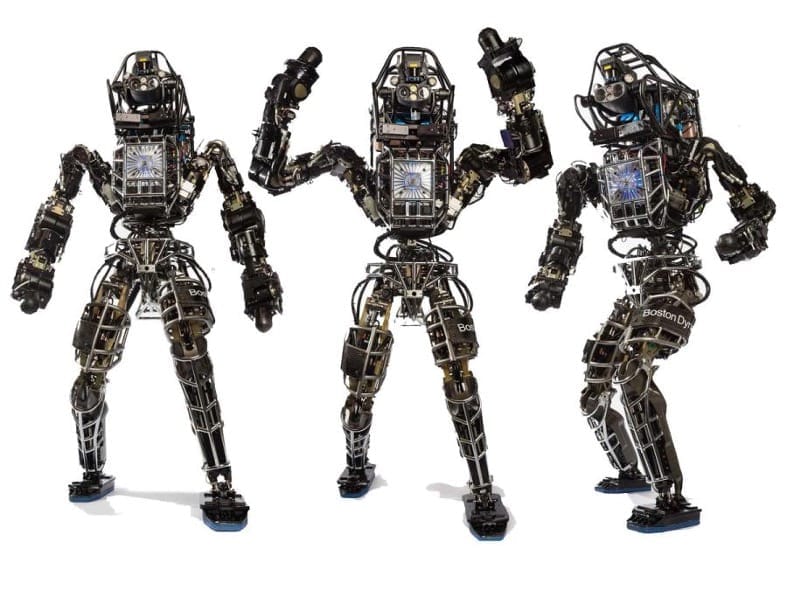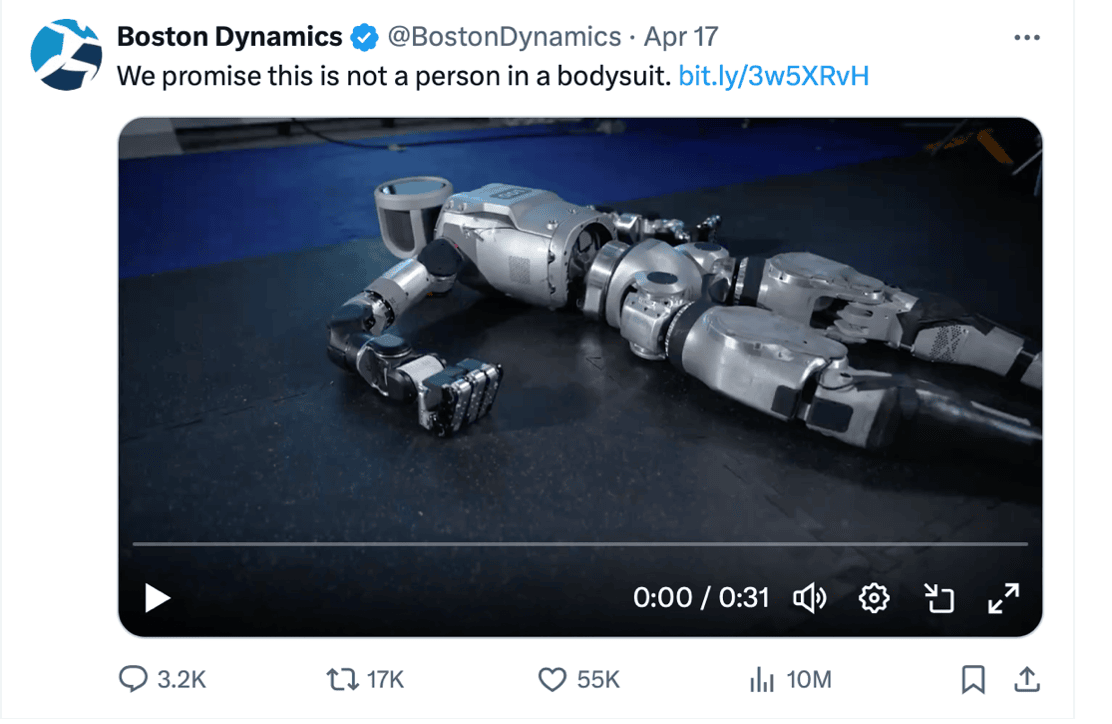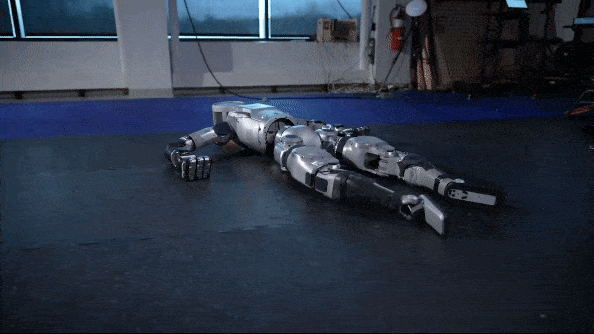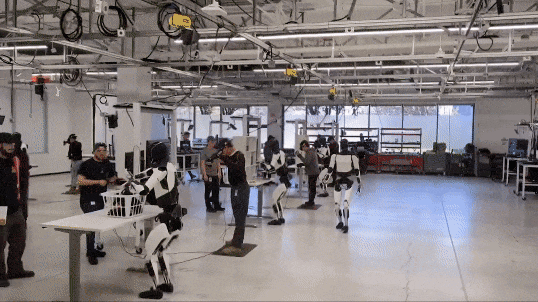
I couldn’t help but be reminded of 1960s science fiction, like Lost in Space, when I first saw Atlas circa 2013.
It’s clunky exoskeleton, odd “hands,” techno-anthropomorphic “head,” and purposeless LED lighting fixture on its chest made it look like it was designed for a marketing stunt rather than for utility — just for show.

That was partly true, as the company behind Atlas — Boston Dynamics — was trying hard to make a name for itself in robotics.
Having been around since the early ‘90s, Boston Dynamics was very early to the game developing humanoid robots.
The initial design above was funded by the U.S. Defense Advanced Research Projects Agency (DARPA) for the purpose of search and rescue applications.
Being able to send a humanoid robot into a hazardous environment, to capture video footage and potentially help those in danger, would certainly save lives.
The objective was worthwhile, but the technology was too rudimentary.
A program manager at DARPA equated Atlas to a 1-year old child in terms of its development. That was just 11 years ago.
Despite the nascent stage of the technology, Boston Dynamics was one of the hottest private tech companies at that time. Just to see a humanoid robot walking, despite being tethered, enabled investors to see that it wouldn’t be long before these designs would become functional in industry.
Shortly after Atlas was announced, Google acquired Boston Dynamics in late 2013.
It came as quite a surprise…
Why would an advertising technology company with a search engine want to acquire a robotics company? It didn’t make much sense.
And apparently after a few years, Google figured that out… and later sold Boston Dynamics to Japan-based telecommunications and internet conglomerate Software for $100 million.
Yet it was another acquisition that didn’t make sense. And Boston Dynamics’s future was even less certain.
But the team didn’t give up…
By 2021, it had a new and physically capable version of Atlas that was powered by hydraulics and capable of performing impressive movements.
Again, there wasn’t much utility. But it was progress, nonetheless. (You can watch the full video of robot parkour right here.)

Those developments in 2021 generated enough excitement for Boston Dynamics to be acquired yet again — this time by Hyundai Motors. Hyundai acquired 80% of the business for $880 million, with Softbank holding on to the remaining 20%.
This was the first acquisition that actually made sense. The South Korea company is a massive industrial conglomerate that even has a large robotics division. There was at least a path forward for development and potentially commercialization.
And ironically, right around the time of the acquisition was Tesla’s press event announcing its own plans for Optimus, its humanoid robot that we’ve been tracking closely in Outer Limits.
The Optimus event, however, was heavily criticized by the press because of a joke Musk played. He dressed up a human in a robot suit to dance on stage.
I was excited to see what Hyundai would do with Atlas, but nothing interesting was announced for years.
Until a few days ago.

In a cheeky tweet, Boston Dynamics poked fun at Tesla’s first press event. “We promise this is not a person in a bodysuit,” they tweeted.
It was an odd — and pretty stupid — comment to make. Especially considering Tesla has been able to accomplish in less than 3 years what Boston Dynamics still hasn’t accomplished in three decades.

All Boston Dynamics was able to show was the new, all-electric Atlas… rising from the ground in a very awkward, inhuman way.
The company’s announcement of the new Atlas was surprisingly light on detail, other than saying that “the electric version of Atlas will be stronger, with a broader range of motion than any of our previous generations.” That’s a pretty low bar.
No specifications were provided, and no further demonstration of its capabilities was shown. And obviously absent was any indication that Hyundai had incorporated any form of artificial intelligence (AI) powered autonomy into Atlas.
The reality is that if Hyundai had something of substance, it would have shown it.
Standing in stark contrast to the latest Hyundai announcement, are the latest advancements with Tesla’s Optimus…
Seen below is a short clip of an update that the Optimus team provided over the weekend.
It shows the training of Optimus in a variety of situations…

This is only the second generation of Optimus, which was first announced just five months ago. We can see a number of the Tesla robots in a training setting, learning from human instruction.
Tesla is also testing Optimus in one of its factories, picking up battery cells (the cylindrical silver objects) off of a conveyor system and placing them with precision into the red tray.
Its gait has also improved when walking through a factory or an office.
But what’s most impressive isn’t what’s visible in the video…
Optimus’ software is a neural network that is running entirely on the robot itself.
It has an embedded, full self-driving (FSD) computing system — yes, very similar to the software in Tesla's EVs — that ingests the video coming from Optimus’ cameras and data from other sensors in order to infer the correct action.
The key point is that any individual Optimus can be trained and deployed so that it can work on its own… in any setting. It doesn’t need to be connected to another computing system in the cloud. It also has the ability to learn from trial-and-error and make corrections when making a mistake.
Sound familiar? It should. That’s exactly what we humans do to solve problems and complete a task correctly.
And keep in mind, once one Optimus has learned how to correctly complete a task, they have all learned how to do it. This “knowledge” can simply be downloaded to each individual Optimus with software upgrades. Learn a task once by a single Optimus, then share the knowledge with all present and future members of the robotic “workforce.”
Hyundai/Boston Dynamics may have built a new hardware platform for Atlas. But robotics isn’t about the hardware…
It’s about the software — the “brain” — that brings them to life and makes them functional for real-world tasks.
And right now, thanks to Tesla’s FSD, that’s something that only Optimus has. And with a head start that spans years.
We always welcome your feedback. We read every email and address the most common comments and questions in the Friday AMA. Please write to us here.